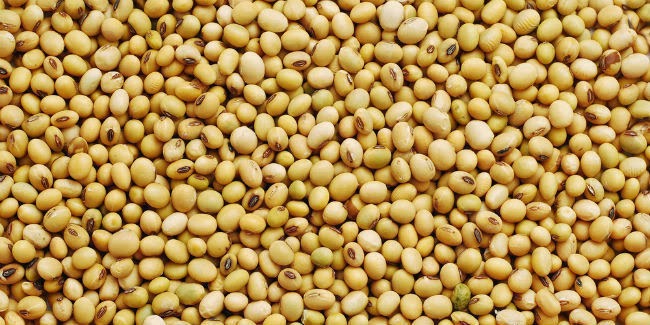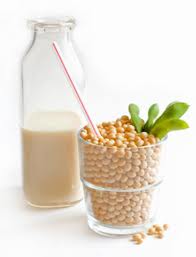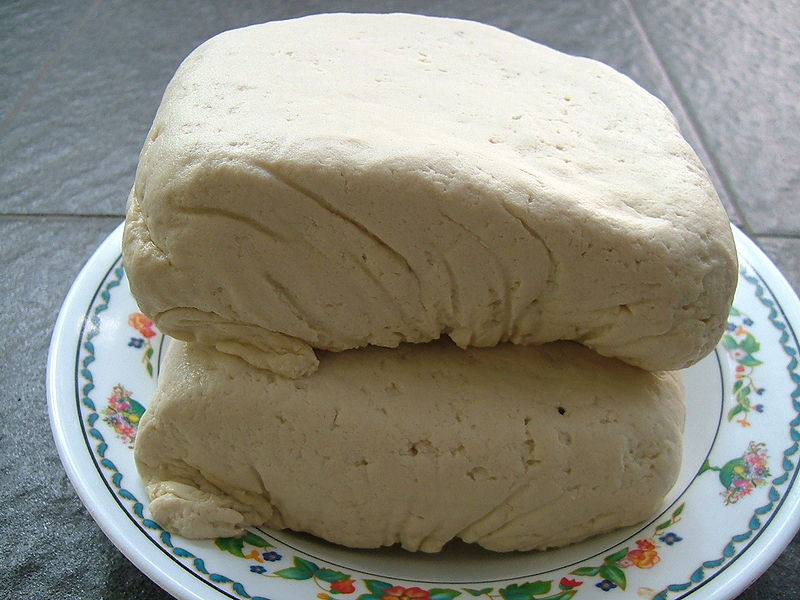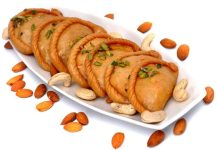Soy bean is cultivated extensively in south Asian countries and U.S.A. In India soy bean cultivation is introduced in 1977. In our country it is cultivated mainly in North Indian sub Himalayan belt. Even though it is the cheapest high quality vegetable protein, we are yet to exploit its full potential. Mainly the Japanese and Chinese consume it as the Chinese gourmet. Chinese create their delicious works of art with soy.
In India people started liking this pulse mainly among the vegetarians. It is a boon to the vegetarians. Soy beans contains the highest protein among the pulses. Other than the whole pulse, lots of processed Soy products are available in the market. They include soy milk, flour, curd and tofu (soy paneer).
Other than the high protein content, it also has good amount of calories and fat. Soya bean contains 43 gms of protein per 100 gms, which is the highest among the pulses. It also contains 19.5 gms of fat, 21gms of carbohydrate and provides 432 kcal per 100 gms. The protein of soya bean contains all the essential amino acids in adequate amounts except methionine and cystine. Since it has majority of essential amino acid it is one of the best vegetarian food item as far protein content is concerned. It is a good source of thiamine, niacin, folic acid and a fair source of riboflavin. Soya bean contains a factor that inhibits the action of the digestive enzyme trypsin and this factor can be destroyed by heat. Soya bean should be cooked well for digestion and absorption. Studies have shown that in type II hyper cholesterolemia patients already on low lipid, low cholesterol diets, eight weeks substitution of animal protein by soya bean protein reduced plasma cholesterol by 23 to 25 percent.
Main disadvantage of soy bean is that the iron absorption is decreased on a soy bean diet compared to the diet of egg albumin or casein of milk. Supplementing vitamin C can increase the iron absorption. It also rarely causes conditions like soy milk goiter and Chinese restaurant syndrome.
This milk can be used for feeding infants and as supplement to diets of weaned infants and preschool children. This milk is also good for grown up. Commercially available Soy milk is prepared by heating at 14lb pressure for 30 minutes to destroy trypsin, growth inhibitors and haemagglutins and fortifying with sugars, vitamins and minerals. Soy bean milk can be prepared from soy bean. Its vitamin content is similar to that of cow’s milk.
Soy milk can be substituted in-patients who have allergy to milk protein. It is available in different flavors and plain. Soaking the pulse and grinding and straining it can make soy milk at home. Soy curd can be made from this milk.
Tofu
Curdling fresh hot soy milk can make tofu or soy cheese. Tofu is prepared by adding calcium or magnesium salts to Soy milk. Fresh tofu can be preserved in a refrigerator for a day.
The other products made from soya bean are natto, tempehe, miso and soya sauce. These products are generally used in Chinese preparation. Like all other pulses soya bean can also be sprouted. Sprouting enhances the vitamin C content. Soya sprouts must be cooked in low heat. They can also be used in salads, soups or stir-fried. Chapathi can be made nutritious by adding soya flour to the wheat flour.
- It is the cheapest high quality vegetable protein.
- It is a good source of thiamine, niacin, folic acid and a fair source of riboflavin.
- Soy bean should be cooked well for digestion and absorption.
- Good for patient having hyper cholesterolaemia.
- Soy milk is used in lactose intolerance both primary and secondary.
- Soy milk preparations are used in galactosaemia. (Note: soy milk do have galactose but in less quantity)
- Commercially available products in India are Nutri nuggets, Nutrila, Meal maker, Crunchies etc.
- Soya bean reduces iron absorption.
- Soy flour can be added to wheat flour to make chapathi.
Nutritive value of soy bean as compared to other pulses per 100 gms
| Pulses | Protein (gms) | Fat (gms) | Calcium (mgs) | Carbohydrate (gms) | Energy (kcal) |
|---|---|---|---|---|---|
| Bengal gram dhal | 20.8 | 5.6 | 56 | 59.8 | 372 |
| Green gram dhal | 24.5 | 1.2 | 75 | 59.9 | 348 |
| Lentil | 25.1 | 0.7 | 69 | 59.0 | 343 |
| Dry peas | 19.7 | 1.1 | 75 | 56.5 | 315 |
| Rajmah | 22.9 | 1.3 | 260 | 60.6 | 346 |
| Soya bean | 43.2 | 19.5 | 240 | 20.9 | 432 |







